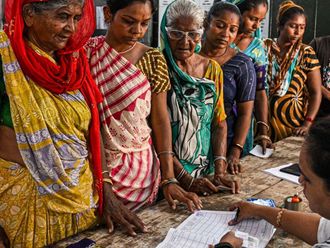
Many people seem unaware of the huge number of sacrifices made by the Palestinian resistance movement in the bigger part of the West Bank. People’s attention has been directed/diverted to inter-Arab disputes and civil wars at the expense of the Palestinian resistance operations that erupted a year ago. These operations have been met with a rise in Israeli occupation’s brutality, including “collective punishment” against the Palestinian people and their land. These developments coincided with a series of laws adopted by Israel’s extremist government designed to suppress the ongoing resistance which Arab, Israeli and other world-wide observers call “the flare-up” or “habbah” that the occupation authorities have so-far failed to stop or abort.
The current habbah broke out almost 14 months ago in the form of protests against the Jewish colonialist settlers’ encroachment on Al Aqsa Mosque .
The protests developed into individual acts by young men and women launching stabbing and run-over attacks against Israeli soldiers. So, here is the broad picture of Palestinian sacrifices and Israel’s punitive measures faced with such confrontation.
First, according to statistics by the Israel/Palestine Centre for Research and Information, 249 Palestinians fell martyr in the first 12 months of the ongoing flare-up. The figures included 68 boys and girls and children under 18 years and 22 women. Most of them were in the Hebron governorate that saw 77 of its men and women killed.
The number of those who also sacrificed their lives and fell victim to Israeli gunfire included 53 in occupied Jerusalem, 22 in Ramallah, 21 in Jenin, 16 in Nablus, 15 in Bethlehem, five in Tulkarem, four in Salfit and two in Qalqilya. The number of Palestinians injured in West Bank and in 1948 areas was estimated at 18,300. To punish their families, the Israeli occupation authorities maintain a policy of demolishing their houses as well as holding the bodies of the Palestinian martyrs. They have refused to release the bodies of 17 Palestinians killed in the confrontations.
Secondly, the Palestinian Prisoners’ Centre for Studies reported that the habbah was met with a continuous Israeli detention campaign targeting thousands of Palestinians. According to the Centre, 8,000 Palestinians were arrested over the past year — including 2,155 children, the youngest of whom was Ali Alqam of occupied Jerusalem aged 12-and-a-half years. The figures included the arrest of 270 women and young girls, with 250 of them accused of incitement on their Facebook pages. The Centre’s report also noted a significant rise in Israeli courts’ (“administrative detention”) orders against Palestinian detainees with 1,773 of them issued against women and minors.
Thirdly, demolition of homes is an old policy adopted by Israel since 1967 in the wake of its occupation of the West Bank and the Gaza Strip. A form of collective punishment, the policy has been put into effect afresh with the escalation of the habbah. According to working United Nations agencies in occupied Palestinian lands, 2015 saw a record number of such crimes with a 40 per cent rise in the demolitions this year.
The Israeli B’tselem Centre (The Israeli Information Centre for Human Rights in the Occupied Territories) reported that the Israeli occupation authorities demolished homes in Palestinian communities in the first half of 2016 more than it did throughout 2015. The number of buildings brought down by Israeli bulldozers were 620 in the first half of this year, including 279 homes and 341 Palestinian-owned commercial, agricultural and industrial facilities (displacing around 2,500 people) — compared to 131 homes and 40 buildings demolished last year.
Fourthly, the mid-year report on Israeli violations in the first half of 2016, issued by Hourani Centre for Studies and Documentation in Gaza, pointed to a rise in the construction and expansion of Jewish colonies with more units given the go-ahead. The report indicated that Israeli occupation authorities have approved — through their various arms that are responsible for construction activities in those colonies — plans, submission of tenders and licence issuances for 8,849 colonising units. Some of them have been implemented, while others are under construction or waiting for completion procedures.
Finally, the same report confirms that the Israeli occupation authorities seized, in the first half of this year, more than 10,315 dunums of Palestinian land in the West Bank, occupied Jerusalem and the Dead Sea area, declaring them “state (i.e. Israeli) land”. Demarcation and survey of more than 62,000 dunums in the West Bank has reportedly been carried out by Israeli teams in order to annex them later on to serve as Jewish colonies, thereby creating a situation on the ground to undermine prospects of a two-state solution.
The Palestinian flare-up or habbah, whose eruption was not in any of Israel’s political and security leadership’s calculations, has important economic, political and moral implications for the Zionist state. It certainly proves ineffectiveness of any Israeli military or intelligence solutions and indicates that Palestinian resistance against Israeli occupation will continue. The habbah goes on despite feelings of frustration as a result of the current civil wars in several Arab countries as well as other disappointing developments at local (Palestinian and Israeli) levels — not to mention of course, the rebirth of a new “Cold War” on the international level.
Professor As’ad Abdul Rahman is the chairman of the Palestinian Encyclopaedia.









